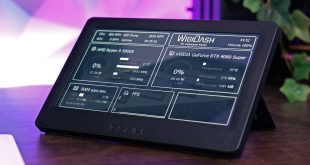The ASrock UEFI bios is a colourful design with a lot of settings. We were a little disappointed with the ‘oc tweaker' panel as there are no processor settings to be adjusted, just memory. Our DDR3 1600mhz Kingston memory could only be set at 1066mhz, which is again lower than some of the competiting products we have reviewed to date.
This is the first time we have seen the Zacata processor correctly identified by CPUz. It is based on 40nm architecture and runs at 1.6ghz. The product is Direct X 11 capable.
The newest Catalyst Control Center offers a wide range of settings – especially those for a demanding video enthusiast. We are really looking forward to testing similar Fusion hardware running within the mobile space. We have a system on the way shortly for testing.
 KitGuru KitGuru.net – Tech News | Hardware News | Hardware Reviews | IOS | Mobile | Gaming | Graphics Cards
KitGuru KitGuru.net – Tech News | Hardware News | Hardware Reviews | IOS | Mobile | Gaming | Graphics Cards

















